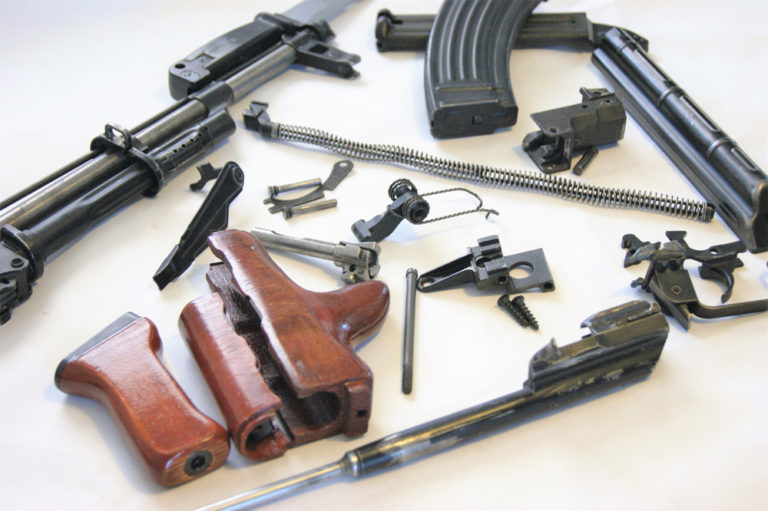
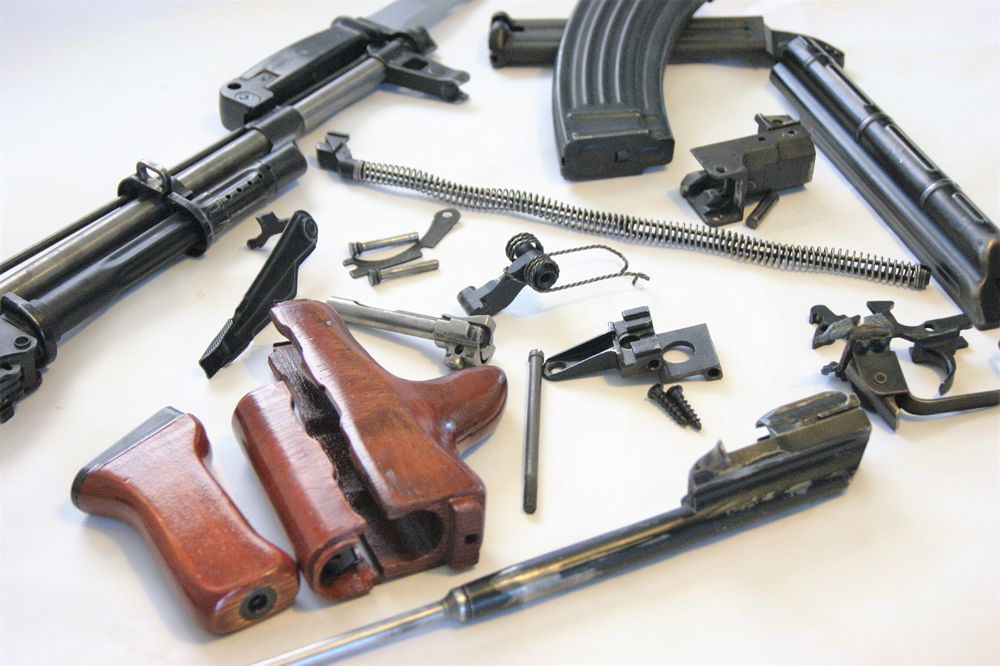 Do-It-Yourself 80 percent firearm builds represent a great chance to increase your gun knowledge, and they have been becoming more and more popular in recent years.
Do-It-Yourself 80 percent firearm builds represent a great chance to increase your gun knowledge, and they have been becoming more and more popular in recent years.
For as long as I can remember, I have been fascinated with the Kalashnikov family of firearms. As a teenager on the cusp of legally transitioning to manhood, I decided to practice my American rights by purchasing my first rifle. Naturally, I gravitated toward the AK style of firearms. Being a few weeks from high school graduation and perpetually broke, I aspired to get the best deal I could while getting a quality firearm. During the weeks between deciding to buy a rifle and actually turning 18, I had time to scour every gun publication I could get my hands on in an attempt to make an informed decision. During my search, I came across these AK kits that, for between $59.99 and $99.99, promised a truly custom, one-of-a-kind rifle on a budget. My interest was piqued, to say the least.
In the end, though, I settled on an unconverted, plain Saiga AK and plunged headfirst into kitchen-table gunsmithing. But in the back of my mind, I never forgot those alluring jumbles of Cosmoline-soaked parts, nor would I forget the promise of a cheap, built-at-home rifle. Back then, the Internet wasn’t anything close to what it is today, and finding information on how to make a kit actually work was nearly impossible, so I shelved the idea for the time.
Years later, I was still a single young man, but I now had a job for Uncle Sam and a check burning a hole in my pocket. In my mind, the only reasonable thing to do with that money was to buy guns. Once again, I saw those kits. They cost a little more by this time, but it was still a negligible price at most. I did some more research on the subject and decided that while I was living in a military barrack, there was no way I could turn these kits into guns without losing my job or facing felony charges.
Then, two years ago, I finally had the money, a house, and the information I needed to make this dream of building my own AKM a reality. Anyone who knows me understands I’m not a man who jumps into something without careful consideration; this project was no different. I spent years learning everything I could, carefully building a tool list, making sure every angle was covered and every part accounted for. And finally, after years of dreaming about it, the big day came. I was hiding behind my truck, a length of paracord held tightly in my hand, the other end tied off to an ugly hunk of metal—vaguely resembling an AKM—securely attached to a wooden pallet. When that first shot rang out in the hot desert air, I knew instantly that I was hooked. I had just built my own firearm from chunks of metal in a box, and it hadn’t killed me.
To this day, I refuse to tally up how much I spent on building that rifle, partially because I don’t want my wife to have another reason to kill me, but also because I don’t care. Conservatively speaking, I would estimate that in tools, refinishing products, gauges, and everything else, I spent approximately three times the cost of a nice factory rifle. Holding in your hands a fully functional rifle that you built yourself is an indescribable feeling that, in my mind, was worth every penny I’d spent—and then some.
During the course of this project, I’ve had the pleasure of meeting many firearms enthusiasts who have freely offered more advice than I could have ever wanted on the subject, and who continue to be a source of guidance and inspiration. This growing community of 80 percent builders has caused no shortage of controversy. In 2014, a California senator famously humiliated himself while making a speech regarding the danger of what he called “ghost guns.” While his speech was filled with ignorant comments and blatant lies, he succeeded in garnering negative attention from a number of gun control groups toward the gun-building community.
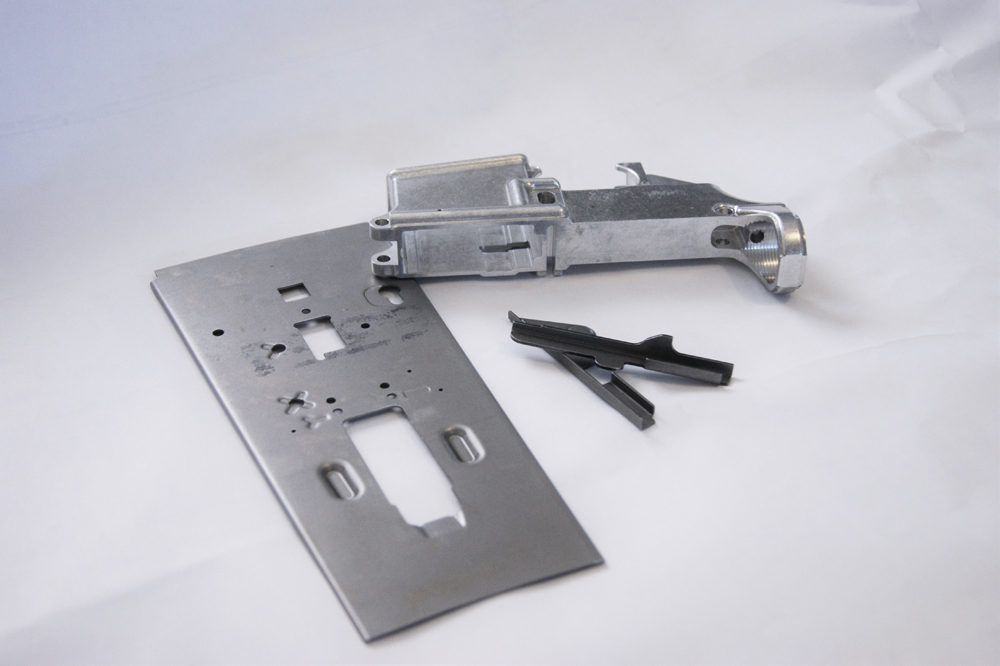
For the sake of argument, I would like to clearly define what exactly an 80 percent firearm really is. Legally, the only part considered a regulated firearm is the receiver. A receiver is defined differently depending on the firearm, but it’s generally the one part that holds the trigger, chamber and magazine all together so the firearm can actually function. Think of the receiver as the heart and soul of the firearm. Because of its essential role, the federal government defines it as the one essential part that is legally regulated the same as a finished firearm. This means that everything else is just a part and completely unregulated. A receiver generally looks like a hunk of oddly shaped metal with holes drilled in specific places and a serial number prominently located in a visible area. This is considered a finished 100-percent receiver, and it requires a background check and Federal Firearms License (FFL) holder to transfer it to the new owner.
An 80 percent receiver is, as the name would suggest, an unfinished receiver. In the eyes of the law, it is a hunk of metal that in its current form is unable to be used as a firearm. Normally, an 80 percent receiver design is submitted to the BATFE for approval before being sold to the public to ensure it cannot easily be converted into a functional firearm. As a general rule, 80 percent receivers require specialized tools, a solid foundation in the fundamentals of firearm mechanics, and careful construction. They’re not for the faint of heart. Because the components that make up the majority of a firearm are unregulated parts, and the 80 percent receiver is also unregulated, all of these items can be ordered online and sent directly to your front door with the swipe of a credit card. You can see why there is controversy surrounding this type of firearm build.
This political turmoil surrounding home-built guns has, like most gun control rhetoric, only served to make the guns even more popular. We live in an age where information on almost any topic can be found with the click of a button. It’s all too easy for someone to hop on the Internet and find step-by-step instructions for every part of the gunmaking process. With modern machinery and materials, someone with the correct tools, a lot of patience, and a mechanical knack can, with some difficulty, make a fully functional firearm. Gone are the days of thumbing through a poorly illustrated gun magazine trying to figure out what the author is talking about. Now you can watch a clear video of someone walking you through the whole process.
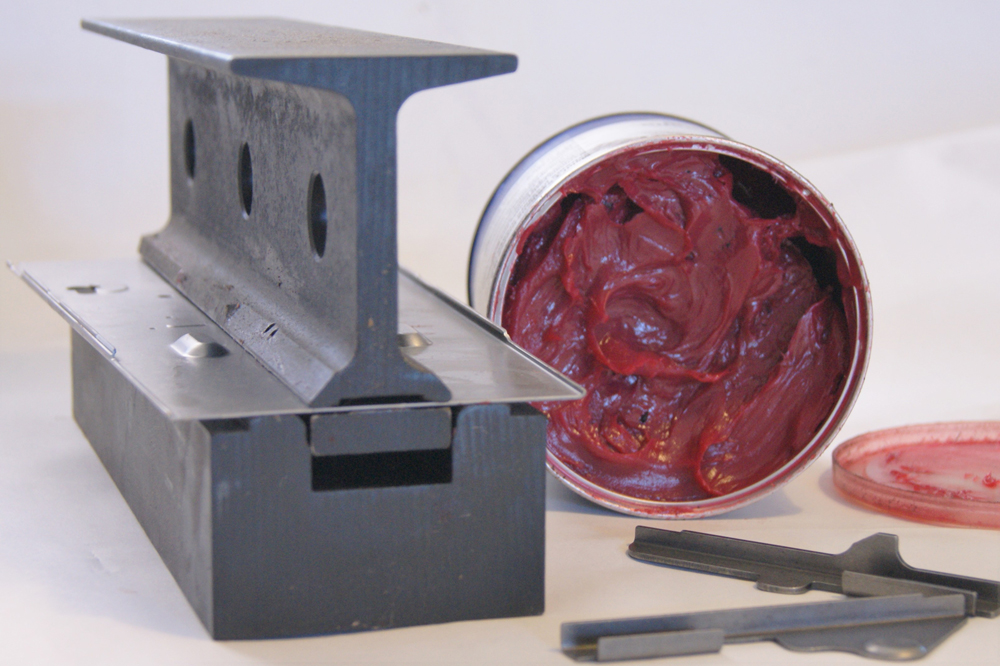
However, it’s not as simple as some would have you believe. My first AK was an abomination. For some of the parts, I tried an advanced welding method I was unfamiliar with. Out of impatience, I also used the incorrect tool for another process. These two mistakes resulted in an unstable receiver; and while the rifle still fired, it was unsafe. Ultimately, it took $25.00 and around 20 extra hours to fix, but that mistake taught me a great deal. I mention this because even with experience, with easy methods of learning the process and with a garage full of tools, making a firearm still isn’t an easy process. It’s expensive, time consuming and will greatly test the patience of even an experienced gun owner.
With that being said, you might ask, “What’s the allure?”
People get into 80 percent builds for a number of reasons. Some living in states with restrictive gun laws enjoy building a gun without the hassle and additional fees required by their state. For some, it’s a hobby, like building model airplanes, just a tad more complicated. Others feel it’s an expression of their constitutional freedom, and enjoy the idea of having a firearm built in the privacy of their own home. Some think it’s the ultimate way to really learn about a particular firearm, and feel it enhances their firearm knowledge. Finally, as firearms become harder to find and gun prices rise, so does the allure of building one yourself.
Over a decade ago, I would have never thought it possible to build a firearm from precision-machined parts, using gauges and jigs that would have the same or better quality than can be purchased commercially. Now, all this time later, I’ve built six so far, with seven, eight, and nine already in the works. I personally wanted to expand my skill set and gain a better appreciation for the work that goes into the firearms I’ve grown to love. And I feel I did exactly that during the process. I got to learn a variety of things I would never have otherwise, met amazing people, and became part of a passionate community.
I am by no means an expert on the topic. If anything, I consider myself an experienced beginner with enough knowledge to be dangerous. All of that aside, I am often asked about 80 percent builds by firearms enthusiasts thinking about getting into the hobby. Normally, I advise them against it. Make no mistake: It’s not some form of elitism that causes me to offer this advice, but rather the nature of this type of work. To build a firearm, one must start with a very serious mentality and 100-percent commitment. There is a myriad of safety and legal considerations that must be taken into account. Nothing about this process should be viewed with a complacent attitude nor taken lightly.
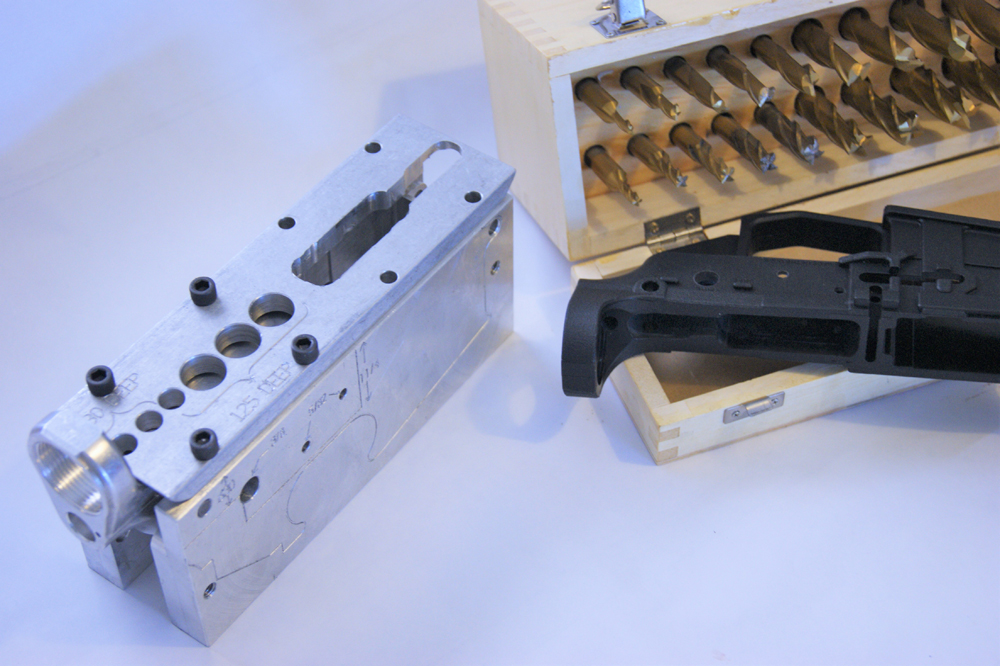
In completing an 80 percent build, you are attempting to take heavy-duty, dangerous machines and use them to shape and tame a piece of metal so that it will contain the massive pressures, fire, and explosions used to send a projectile racing at a high speed toward a target. This process can be done safely, but extreme care must be taken. And because you are manufacturing a firearm, there are laws that you must adhere to. All of this is the responsibility of the individual undertaking the project, and it’s not all intuitive. The correct mindset is essential, and any doubt about the process is an excellent reason to consider not undertaking the project in the first place, especially when a firearm of equal or greater quality can be found in your local gun shop for less than what the home builder would pay.
However, if you, like me, are set on this path, modern technology is here to aid you in overcoming these obstacles. Most companies that sell products specific to the 80 percent builder also employ experienced builders, and they will often offer legal and safety guides with their products. A quick Google search will help you find many websites full of advice from average Americans all over the country who have completed similar projects and are more than happy to share their passion and hard-learned lessons. Finally, because this is becoming such a popular hobby in the firearms community, there are a wide variety of resources for tools, guides, and parts. A few big names in the firearms world only exist to sell products and parts for these 80 percent firearms, demonstrating just how popular this hobby really is.
I predict that these builds will only become more popular as technology advances: Tools will become even more affordable and available for the hobbyist, information even easier to share, and precision parts even easier to manufacture. While it most certainly will never be for everyone, there will always be a segment of gun owners that loves to tinker, and this is the next logical step of that tinkering. By nature, Americans have always been a hearty people, self-reliant and independent. And firearms have always been intrinsically tied to those all-American values. I honestly can’t think of anything that honors and promotes those values more than having the tools, knowledge and ability to assemble your own firearm from a bin of parts and metal.
Editor's Note: This article is the winning submission of a student writing contest that Sonoran Desert Institute (SDI) conducted in partnership with Gun Digest. This writing contest was created to provide opportunities for SDI students to gain visibility on their writing skills in the form of a published article in Gun Digest's online blog.

Next Step: Get your FREE Printable Target Pack
Enhance your shooting precision with our 62 MOA Targets, perfect for rifles and handguns. Crafted in collaboration with Storm Tactical for accuracy and versatility.
Subscribe to the Gun Digest email newsletter and get your downloadable target pack sent straight to your inbox. Stay updated with the latest firearms info in the industry.

![Best Concealed Carry Guns In 2025 [Field Tested] Wilson Combat EDC X9S 1](https://gundigest.com/wp-content/uploads/Wilson-Combat-EDC-X9S-1-324x160.jpg)


![Best 9mm Carbine: Affordable PCCs [Tested] Ruger Carbine Shooting](https://gundigest.com/wp-content/uploads/Ruger-Carbine-Shooting-100x70.jpg)
![Best AR-15: Top Options Available Today [Field Tested] Harrington and Richardson PSA XM177E2 feature](https://gundigest.com/wp-content/uploads/Harrington-and-Richardson-PSA-XM177E2-feature-100x70.jpg)
